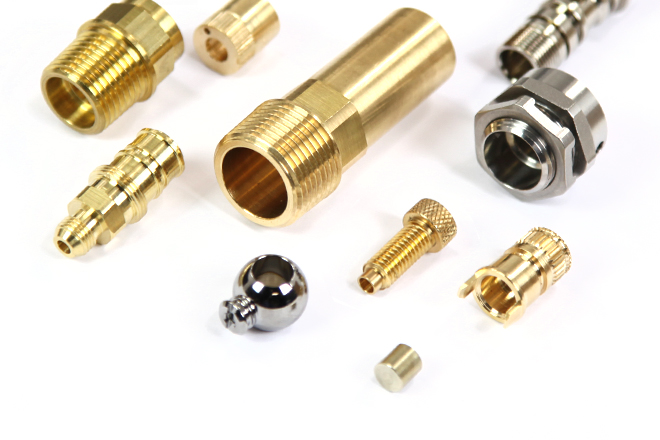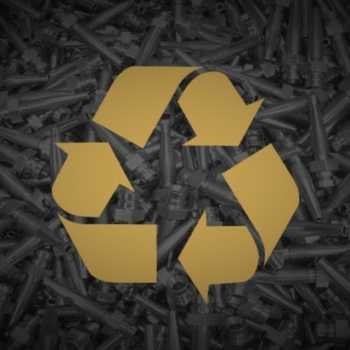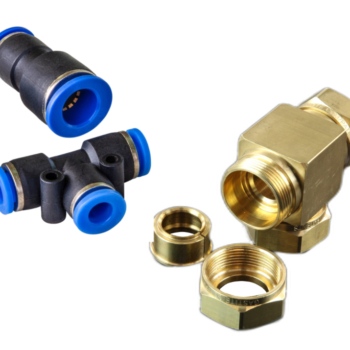Eco Brass Vs Stainless Steel
There are plenty of metal types and alloys out there for many applications, in order to keep up with the demands of consumers who use these materials, we have put together a guide looking at the differences between Eco Brass vs Stainless Steel and whether one is a better option than the other to use. Both metals offer their own advantages, so it’s important to make comparisons to see which one comes out on top.
What is Eco Brass?
Eco Brass is a relatively new alloy, developed in response to market needs from the water fitting industry. The industry was looking for an excellent corrosion resistant material that also complied with environmental legislation to be lead-free. Other factors were considered when developing this new alloy such as machinability. The water fitting industry is a large consumer of brass components, some of which are complex to manufacture. The material needed to have good machinability characteristics to keep production costs low. In achieving the criteria for the new alloy, Eco Brass was created.
Eco Brass Benefits
Soon after the creation of Eco Brass, additional benefits and potential uses were realised due to the high tensile strength similar to that of austenitic stainless steel.
So, with Eco Brass, you’ve got a strong, corrosion resistant and environmentally friendly metal that can replace standard brass fittings and will comply to the Safe Drinking Water Act, but can also be used to replace typical stainless steel components that are under high pressure such as hydraulic components or hydrogen-high-pressure valves.
Depending on the complexity of the component, Eco Brass is a good choice for manufacturers over stainless steel components because production costs are lower due to better cycle times and longer tool life. Lower production costs mean lower component prices!
Stainless Steel Benefits
The main benefit of stainless steel components is corrosion resistance. It is also an aesthetic, durable material and has many uses due to its tensile strength. However, from a manufacturing perspective, it is difficult to machine usually meaning higher production costs.
Stainless steel refers to a variety of steel types, where there are five major types in general. These are:
- Austenitic
- Ferritic
- Martensitic
- Duplex
- Precipitation hardening steels
Stainless Steel is known for its fantastic properties such as resistance to corrosion and heat over a wide range of temperatures. It’s used in a lot of household goods, industrial piping and construction.
Eco Brass Vs Stainless Steel
Both Eco Brass and Stainless Steel have their benefits such as corrosion resistance, high tensile strength and recyclable so the environmental impact is low. In a nutshell, their performance is very similar, which makes either option a valid one.
As a raw material, Eco Brass tends to be more expensive than Stainless Steel, but the benefits gained in production cost can be far more beneficial for Eco Brass as a total solution. This would be individually component specific.
When is comes down to just price; either route can be more cost effective, therefore it’s wise to explore both options with your manufacturer. However, as Eco Brass becomes more popular the cost will reduce over time. With quicker manufacturing processes Eco Brass will be a far better cost solution going forward.
Is Brass More Expensive than Stainless Steel?
When considering the expense, brass typically proves to be more economical than stainless steel. The primary reason for this lies in the availability and lower production costs associated with brass, making it a more budget-friendly option. While the price of brass can fluctuate based on the specific grade or alloy being purchased, in general, it remains considerably more affordable than stainless steel.
Brass, an alloy of copper and zinc, benefits from wide availability, as both copper and zinc are relatively abundant in comparison to the elements used in stainless steel production. This abundance contributes to a competitive market for brass, resulting in its comparatively lower price point.
Additionally, the manufacturing process for brass is relatively straightforward, further driving down production costs. In contrast, stainless steel, composed primarily of iron, carbon and chromium, requires more complex procedures during its production, contributing to its higher price.



